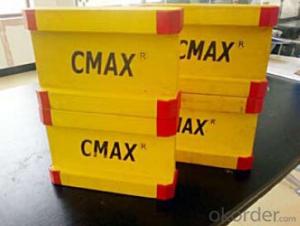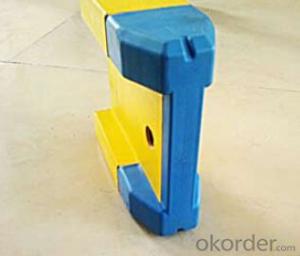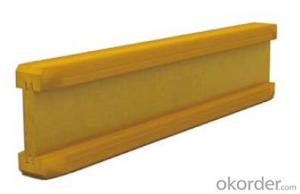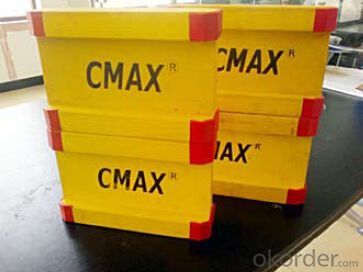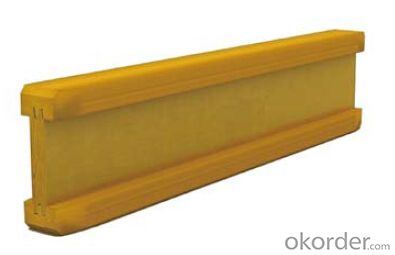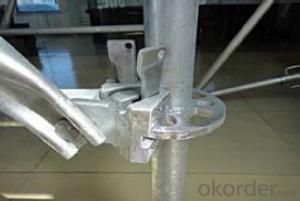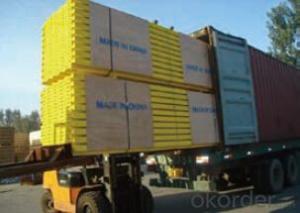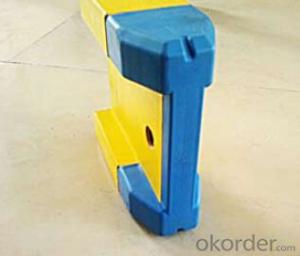Timber-Beam Formwork for building construction
- Loading Port:
- Tianjin
- Payment Terms:
- TT OR LC
- Min Order Qty:
- 50 m²
- Supply Capability:
- 1000 m²/month
OKorder Service Pledge
Quality Product, Order Online Tracking, Timely Delivery
OKorder Financial Service
Credit Rating, Credit Services, Credit Purchasing
You Might Also Like
Characteristics:
◆ Standardized production lines.
Supply capability: 3000m/day, Lmax = 6600mm.
◆ Finger jointing of the flange and web, the strength of timber beam is highly improved.
Max. shearing force failure load:40KN
◆ Well treated to prevent from water penetration or erosion, so the service life maximally
extended.
Normally, CNBM timber beam H20 can be used for 4 to 5 years, the exact using time would
depend on maintenance & storage.
◆ Robust caps at the end of the girders protect against damages.
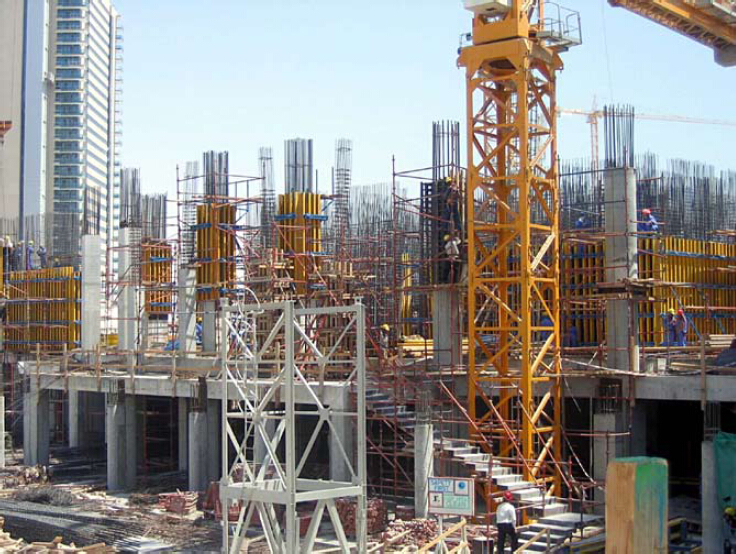
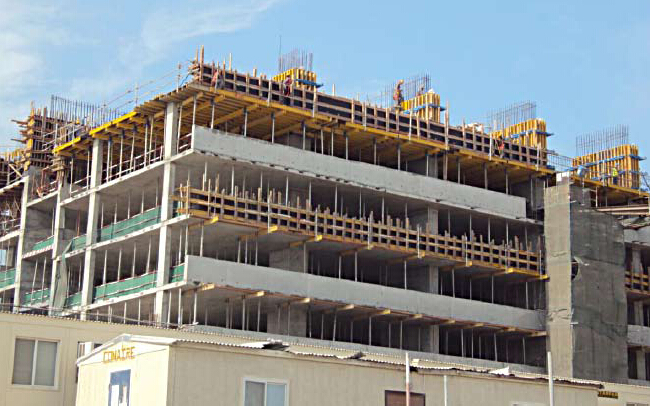
- Q: How does steel formwork contribute to the overall structural integrity of a building?
- Steel formwork plays a crucial role in contributing to the overall structural integrity of a building. Firstly, steel formwork provides a robust framework for pouring and shaping concrete, ensuring that it maintains the desired shape and dimensions during the construction process. This is particularly important for complex or irregular structures, where the use of steel formwork allows for accurate and precise construction. Furthermore, steel formwork offers excellent strength and durability, which enhances the structural integrity of the building. Steel is inherently strong and can withstand heavy loads, making it suitable for supporting the weight of concrete and other construction materials. This strength ensures that the formwork remains stable and secure, preventing any potential collapse or deformation during the construction process. Additionally, steel formwork provides excellent dimensional stability, which is vital for maintaining the structural integrity of the building. Steel is resistant to warping, shrinking, or expanding due to changes in temperature or humidity, ensuring that the formwork retains its shape and does not compromise the structural stability of the building. Moreover, the use of steel formwork allows for efficient and speedy construction, which can also contribute to the overall structural integrity of the building. Steel formwork systems are reusable and can be easily assembled and disassembled, enabling faster construction cycles. This reduces the risk of errors or delays, ensuring that the building is constructed in a timely manner and minimizing potential structural issues that may arise from prolonged construction periods. In conclusion, steel formwork is essential for ensuring the overall structural integrity of a building. Its robustness, strength, dimensional stability, and efficiency contribute to the accurate construction and support of the building's structural components, ultimately ensuring its safety and durability.
- Q: What are the different finishes available for steel formwork?
- Some of the different finishes available for steel formwork include smooth, textured, brushed, and galvanized finishes. Each finish serves a specific purpose and can be chosen based on the desired appearance, durability, and functionality of the steel formwork.
- Q: Can steel formwork be used for railway construction projects?
- Yes, steel formwork can be used for railway construction projects. Steel formwork is known for its strength, durability, and versatility, making it suitable for various construction applications, including railway projects. It can provide a sturdy and reliable support system for concrete casting, ensuring the construction of durable and long-lasting railway structures.
- Q: How does steel formwork prevent concrete honeycombing?
- Steel formwork prevents concrete honeycombing by providing a strong and rigid framework that holds the concrete in place during the pouring and curing process. Honeycombing occurs when there are voids or gaps in the concrete mixture, which can weaken the structural integrity and aesthetics of the final product. Steel formwork is designed to be robust and durable, ensuring that it maintains its shape and prevents any movement or shifting of the concrete. This reduces the risk of air pockets or voids forming within the concrete mixture, which can lead to honeycombing. Additionally, steel formwork is typically made with smooth surfaces that prevent the concrete from sticking to the formwork. This allows for easier removal of the formwork once the concrete has cured, minimizing the chance of any damage or disruption to the concrete surface that could potentially lead to honeycombing. Furthermore, the tight fit and precise alignment of steel formwork help to control the flow and placement of the concrete, ensuring that it fills all the required areas without any gaps or voids. This helps to eliminate potential weak points or areas where honeycombing could occur. Overall, steel formwork provides a reliable and effective solution for preventing concrete honeycombing by offering a sturdy framework, smooth surfaces, and precise alignment that promotes the proper filling and curing of the concrete mixture.
- Q: Can steel formwork be used for marine construction projects?
- Yes, steel formwork can be used for marine construction projects. Steel is a durable material that can withstand harsh marine conditions, including exposure to saltwater, waves, and corrosive elements. Steel formwork provides the required strength and stability to withstand the forces exerted by the marine environment. It can be used for various marine construction applications, such as building seawalls, piers, jetties, and offshore structures. Additionally, steel formwork offers advantages such as easy assembly and disassembly, reusability, and the ability to create complex shapes and structures. However, proper corrosion protection measures, such as galvanization or the use of anti-corrosive coatings, should be implemented to ensure the longevity and performance of the steel formwork in marine environments.
- Q: How does steel formwork contribute to the overall safety of workers?
- Steel formwork contributes to the overall safety of workers in several ways. Firstly, steel formwork is known for its strength and durability, providing a stable and secure structure for workers to perform their tasks. This stability minimizes the risk of accidents and collapses, ensuring the safety of workers. Additionally, steel formwork is designed to be fire-resistant, offering protection in case of fire emergencies. This feature significantly reduces the risk of injuries and provides workers with valuable time to evacuate the area safely. Moreover, steel formwork is engineered to be resistant to various weather conditions, such as strong winds and heavy rains. This resistance prevents formwork from becoming unstable or collapsing during adverse weather, minimizing the risk of accidents and injuries for workers on-site. Furthermore, steel formwork is typically designed with safety features such as non-slip surfaces and handrails, enhancing worker safety by providing better grip and stability when moving around the structure. These features help prevent slips, trips, and falls, which are common causes of accidents on construction sites. Another important aspect is that steel formwork is reusable and can be easily assembled and disassembled. This reduces the need for workers to carry heavy materials or tools, decreasing the risk of strain injuries and fatigue-related accidents. Lastly, steel formwork is designed to ensure proper support and alignment, minimizing the risk of structural failures or collapses during concrete pouring. This precise alignment ensures the stability of the structure and reduces the likelihood of accidents that could endanger workers' safety. In conclusion, steel formwork plays a crucial role in enhancing the overall safety of workers. Its strength, durability, fire resistance, weather resistance, non-slip surfaces, and proper support contribute significantly to creating a secure working environment, reducing the risk of accidents, injuries, and structural failures.
- Q: How does steel formwork affect the overall stability of the structure?
- Steel formwork can greatly enhance the overall stability of a structure. Its rigid and durable nature provides strong support during the construction process, ensuring that the concrete is poured and cured accurately. This stability prevents any shifting or deformation of the structure, resulting in a more robust and long-lasting building. Additionally, steel formwork allows for precise alignment and dimension control, enabling the structure to meet the required design specifications, resulting in enhanced stability and structural integrity.
- Q: What are the considerations when designing steel formwork for tunnels?
- When designing steel formwork for tunnels, there are several important considerations to take into account. Firstly, the formwork needs to be strong and durable enough to withstand the pressure and forces exerted by the surrounding soil and rock during tunnel construction. It should be able to resist bending, deformation, and potential structural failure. Secondly, the formwork should be designed to be easily assembled and disassembled, as tunnels typically require repetitive formwork installation and removal. It should allow for efficient and quick construction, reducing downtime and costs. Thirdly, the formwork should be designed with proper alignment and accuracy, ensuring that the tunnel's dimensions and shape are precisely maintained. This is crucial for achieving the desired structural integrity and functionality of the tunnel. Additionally, considerations such as corrosion resistance, waterproofing, and fire resistance should be taken into account to ensure the longevity and safety of the formwork. Overall, the design of steel formwork for tunnels needs to prioritize strength, durability, ease of installation, accuracy, and appropriate protective measures to ensure a successful and safe tunnel construction process.
- Q: Can steel formwork be used for tunnel linings?
- Tunnel linings can indeed utilize steel formwork, a flexible and long-lasting alternative that can be tailored to meet the precise demands of tunnel construction. This solution furnishes a robust and inflexible framework, able to withstand the immense pressures and forces exerted by the surrounding terrain and potential water infiltration. Furthermore, steel formwork boasts the added benefit of reusability, rendering it an economically viable choice for tunnel linings. Additionally, assembling and disassembling steel formwork is a simple task, facilitating the expedient and punctual construction of tunnel linings.
- Q: Can steel formwork be used for airport runway construction?
- Airport runways can indeed be constructed using steel formwork. Steel formwork is a versatile and durable option for building concrete structures, including runways. It offers numerous advantages compared to other forms of formwork, such as timber or aluminum. To begin with, steel formwork provides a high level of strength and stability, ensuring an efficient and accurate concrete pouring process. This is crucial in runway construction, as the surface must be even and strong enough to withstand heavy aircraft traffic. Additionally, steel formwork is reusable, making it cost-effective for large-scale projects like airport runways. Its durability allows for multiple uses, reducing the need for frequent replacements and saving both time and money. Moreover, steel formwork can be easily assembled and disassembled, making it convenient for construction sites with tight schedules or limited space. Its modular design allows for quick installation and adjustment, enabling efficient construction progress. Furthermore, steel formwork exhibits excellent resistance to various weather conditions, including extreme temperatures and moisture. This is vital for airport runways, which endure constant wear and tear from aircraft as well as harsh weather conditions. In conclusion, steel formwork is a suitable choice for airport runway construction due to its strength, reusability, ease of use, and resistance to different weather conditions. Its ability to provide a stable and durable surface makes it an ideal option for creating runways capable of handling heavy aircraft traffic.
Send your message to us
Timber-Beam Formwork for building construction
- Loading Port:
- Tianjin
- Payment Terms:
- TT OR LC
- Min Order Qty:
- 50 m²
- Supply Capability:
- 1000 m²/month
OKorder Service Pledge
Quality Product, Order Online Tracking, Timely Delivery
OKorder Financial Service
Credit Rating, Credit Services, Credit Purchasing
Similar products
Hot products
Hot Searches
